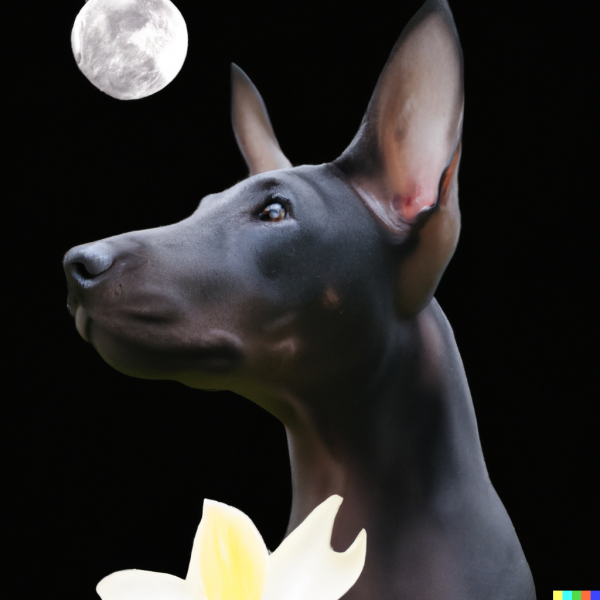
A mere once or twice a year, a full moon and a king tide occur concurrently, but the moon that will be seen tonight in North America is particularly unique.
It is a full, super, “blue Moon,” the only blue Moon of 2023, and a lunar trifecta that won’t happen again until 2037. It’s called a “blue moon” because it is the second full moon of the month (the next one is in August 2024), and labeled a “supermoon” because it is closer to Earth than usual (just 222,043 miles) which will make it look 14 percent bigger, and thus, especially bright. As an aside, it’s not actually larger, it just looks huge because of how it lines up against the landscape, a phenomenon called the “Moon illusion.” “King Tide” refers to an exceptionally high tide that happens during certain seasons — and moon phases.
Lunar cycles are important in many cultures because a full or crescent Moon marks certain celebrations or festivals. Today’s full moon, for instance, marks Raksha Bandhan, a Hindu festival that celebrates the relationship between brothers and sisters. It also begins early preparation for the Jewish New Year: Rosh Hashanah begins the night this full Moon fades and a new Moon phase begins.
We’re so glad you ask what this has to do with purebred dogs! (we heard you thinking it)…..
There is a breed nicknamed the “Moon Dog” because of its association with the moon and the supernatural, and that is the National Dog of Peru, the Peruvian Hairless Dog (known in the US as the Peruvian Inca Orchid) aka the Viringo, Chimú dog, and its Spanish name, “Perro sin pelo del Perú,” or “hairless dog of Peru.”
It should be said that the origin of the nickname is a bit of fanciful fun. As the story goes, the breed acquired its lunar nickname because of its proclivity to avoid harsh sun rays by seeking shelter in caves. When darkness fell, and the night cooled under moonlight, the dogs emerged out of the caves to enjoy being dogs and doing doggie things. While it would seem obvious to us today that a hairless dog would seek shade to avoid skin-burning sunshine, and then come out when the sun goes down, Peruvian Hairless Dogs are actually sun loving dogs, and one traveling to Peru will see the dogs laying out on the streets, soaking up the rays.
But back to our story: The Incas saw the coinciding emergence of the moon and the dogs as the two having a magical relationship, and it imbued the PIO with mystery.
It’s important to note that the Incas were the only culture in the world to define constellations of both light and darkness. They identified constellations and individual stars, assigned each a purpose, and believed that everything in and around the world was connected. Incas saw the Moon as an expression of death and rebirth because it always waxed and waned every month. A dog seen under the moon, then, was reasonably associated with it, and for a culture that predicated many of its rituals and cultural traditions on the lunar calendar, the Peruvian Inca Orchid was supernatural.
Surely it was the moon that gave the PIO “healing powers;” these dogs were warm to the touch, and gave relief to the rheumatic or arthritic person holding it. Today we know that the internal and external temperatures of these dogs is exactly the same as other breeds. The dogs only seem warmer because the absence of hair leads leads to an immediate and direct emanation of heat (unlike hairy dogs that filter heat through their hair by natural ventilation). Pedro Weiss, a German dermatologist who studied the breed for a long time in Lima, Peru, pointed out in his research that genetically speaking, hairless Peruvian Inca Orchid dogs (the breed does have a coated variety) have ectodermal hypoplasia syndrome, an anomaly due to the FOXI3 gene variation.
Ancient Incas, of course, didn’t know this, and revered the PIO for its mystic powers. They revered it in their pottery and art, buried a mummified dog with its owner to assist the soul on its journey into the afterlife, and to keep away any unwanted spirits.
In 2001, the breed was declared part of Peru’s national heritage and recognized as “native to Peru” by Law 27537. To this day, Peru celebrates the Day of the Peruvian Hairless Dog* each year on June 12, but as you look for the Blue Moon tonight, August 30th, 2023, give a thought to this hairless breed.
*We’ve been advised that the Peruvian Inca Orchid is the “American version” of the PSPP (Perro sin pelo del Perú) and the only country in the world that uses the name Peruvian Inca Orchid. The PIO/PSPP terminology is not interchangeable .
Image Dall-e generated

The PIO is a designer creation from the USA. The Perro Sin Pelo Del Peru (Peruvian Hairless Dog) is the national dog of Peru. There is a difference. The kennel club of Peru has denounced the PIO and its creators culture appropriation. FCI, the kennel club most countries in the world belong to, absolutely refused recognition of the PIO and instead recognizes the true breed Peruvian Hairless Dog. All the hype and stories surrounding the PIO were clever designer marketing tools, not facts.
Thanks! We’ve done some editing to reflect a correction